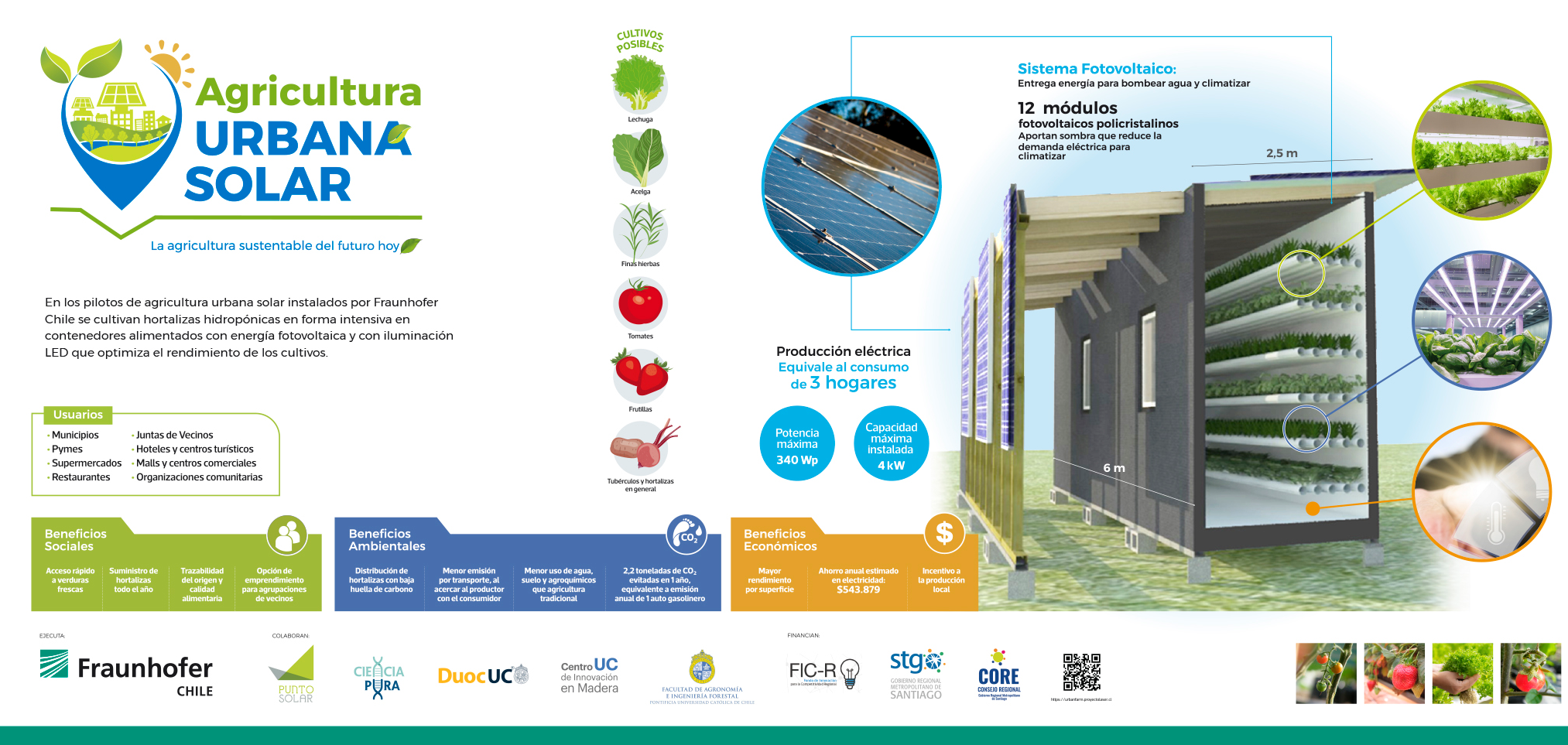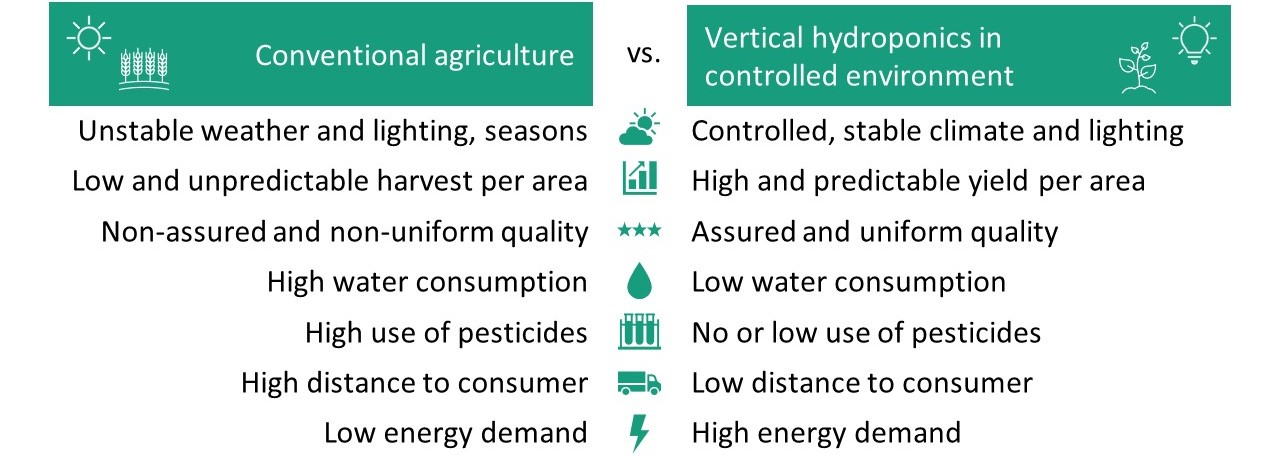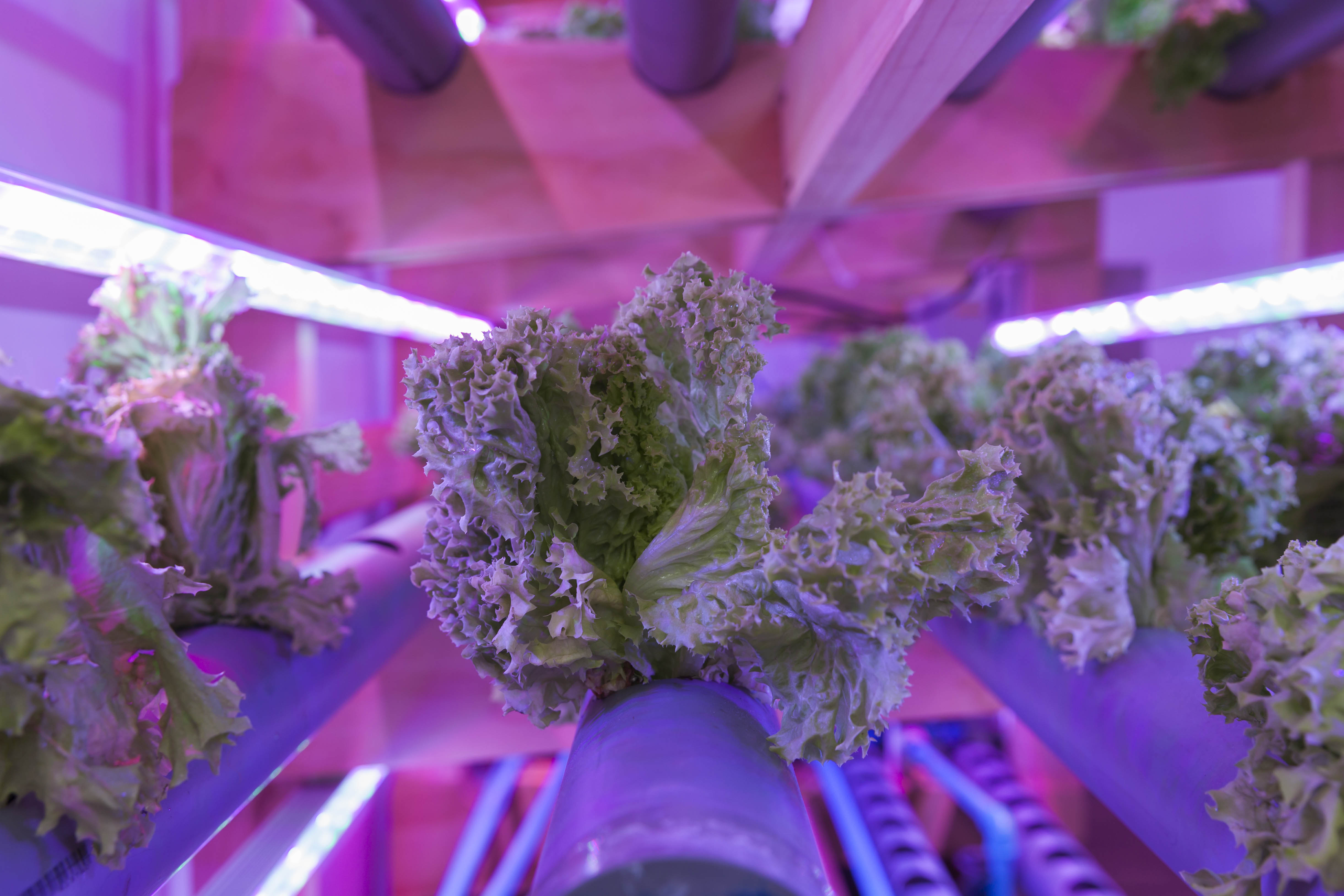The Urban Farm PV concept combines solar PV generation with vertical hydroponics in a controlled environment to solve the main challenges of agriculture in the Metropolitan Region: the dependence on scare resources such as water and fertile soils together with the needed reduction of greenhouse gas (GHG) emissions and the elimination of polluting chemicals.
Urban Farm PV

FIC-R Project: Construction of two pilots in the Metropolitan Region
As part of the FIC-R Met 2017 project, two Urban Farm PV pilots were installed in the Metropolitan Region: one pilot was implemented under a community model in the Municipality of Quinta Normal where training for the operation of the module was provided to the employees of the municipality and neighbors to independently grow food.
The pilot consists of a container with a NFT (Nutrient Film Technology) hydroponic system installed with a capacity for 300 horticultural plants. The artificial light for the crops is provided by 24 LED bars from PARALED, which allow controlling and optimizing plant growth and production, through a specific light spectrum for plants, with adjustable red : blue ratio. 12 PV panels with a power of 320 Wp were installed on the container with a total capacity of 3,840 Wp. The photovoltaic panels are installed on a wooden structure designed by the Wood Innovation Center of the Universidad Católica de Chile.

A second pilot was transferred to UrbanaGrow, a startup formed by a group of young entrepreneurs from Santiago who identified a business opportunity to apply the Urban Farm PV concept in a commercial environment through a contract with a major retail chain. A total of 120 vertical towers of 1.85 meters were installed resulting in a total capacity for 1200 crops, such as lettuce or basil. A nutrient solution is constantly passed from the top of each tower through a fabric, which allows the roots to be in contact with the nutrient solution. To ensure optimal light conditions, 8 PARALED spotlights and 16 PARALED bars were installed, allowing investigation regarding different lighting conditions.
The photovoltaic system of this pilot has a capacity of 2,700 Wp and consists of 5 PV panels installed on the roof of the container, which are connected to an on-grid inverter that allows to power the container.

With two pilots in operation, Fraunhofer Chile is studying and analyzing the energy and water consumption of the Urban Farm PV concept. The project is financed by the Metropolitan FIC-R fund of the Regional Government under the BIP code: 40002643-0 and has the support of Ciencia Pura, Punto Solar, DUOC and Centro de la Madera UC, fulfilling both socio-community objectives and strengthening regional entrepreneurship in an innovative and sustainable concept.
In this video it is possible to observe the two UFPV pilot modules built with the project carried out with the FIC-R Fund of the Metropolitan Regional Government.

Cooperation possibilities
Fraunhofer Chile supports industry and the public sector in the development of the Urban Farm PV concept by assisting with project implementation and scientific measurements to validate results.
 Fraunhofer Chile Research
Fraunhofer Chile Research